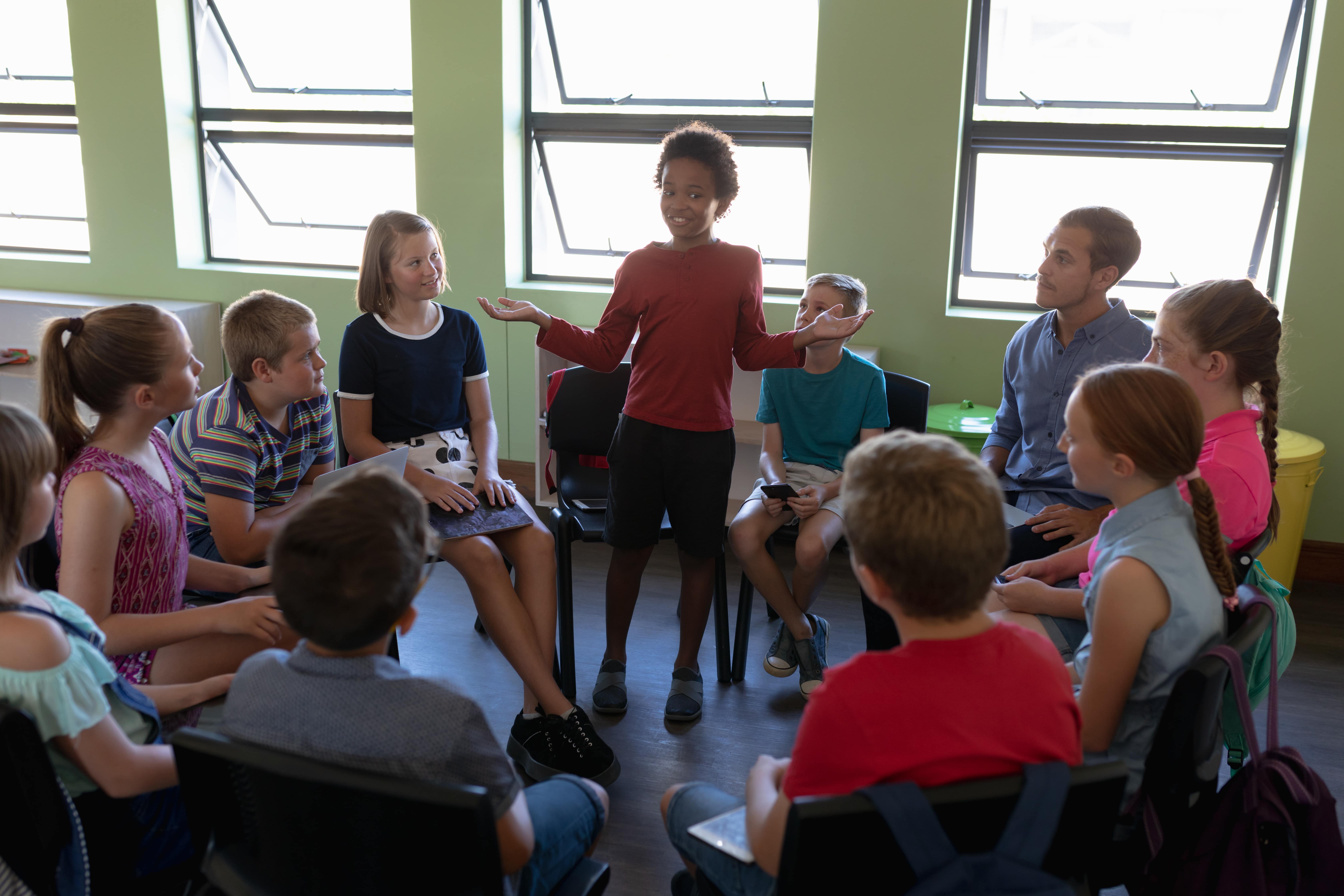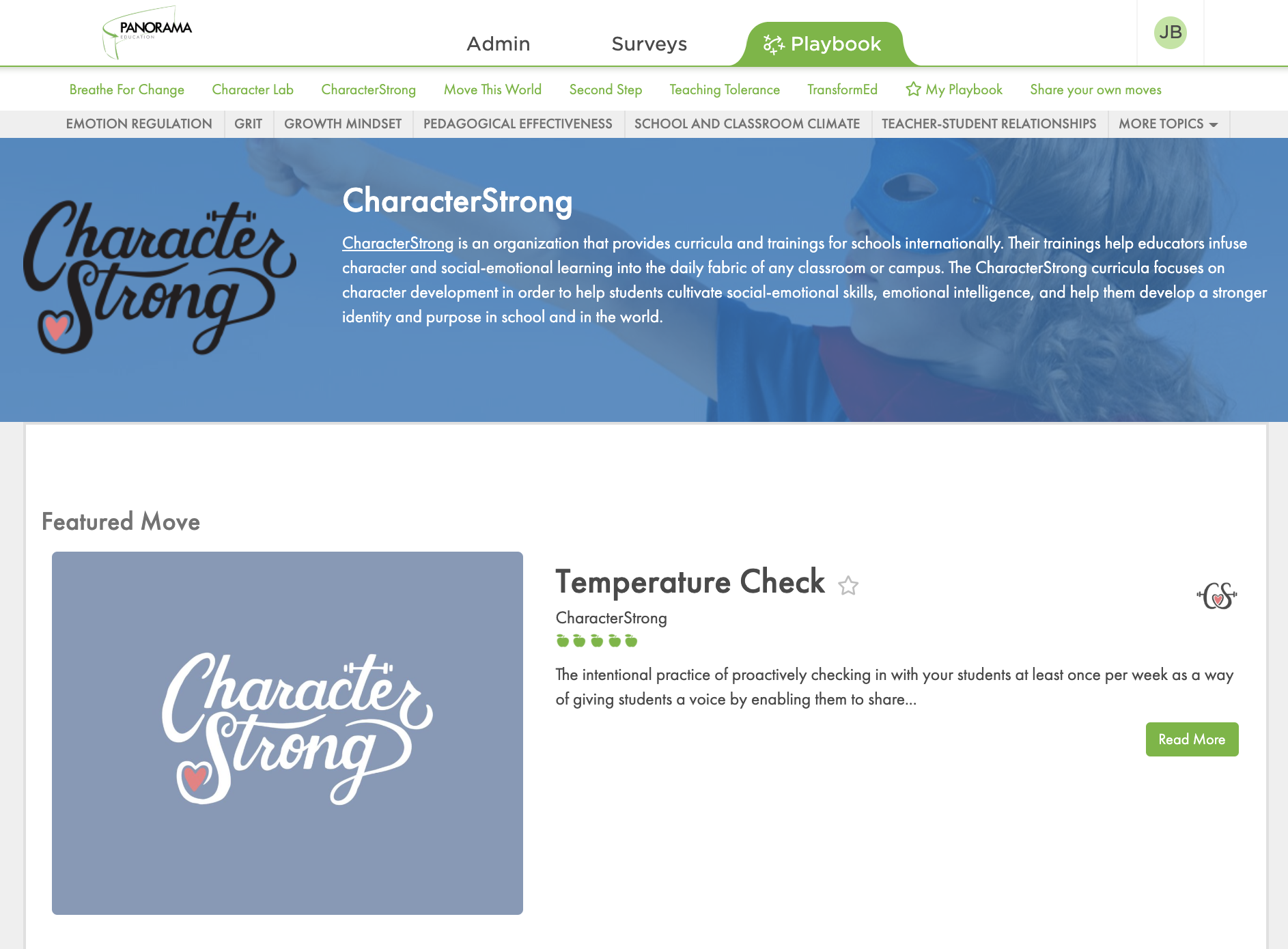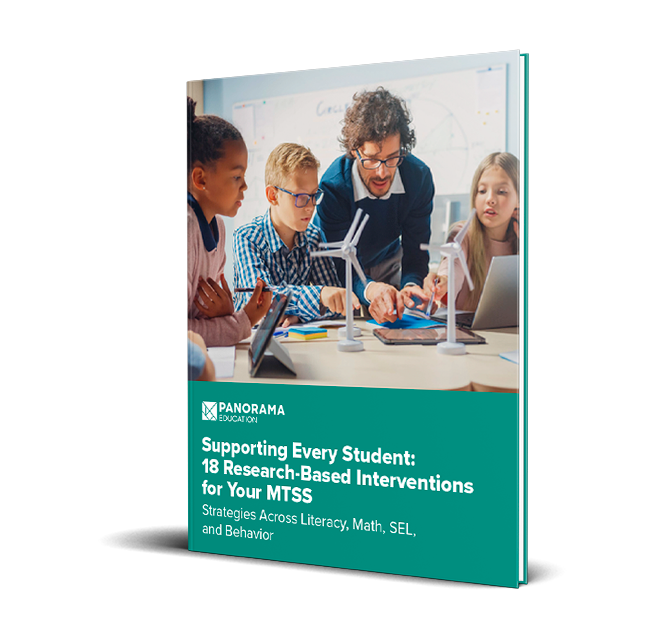In the transition back to school this fall, we have an opportunity to take a healing-centered approach to engaging students and to recapture a sense of community in our classrooms.
As we search for practices to help build safe and inclusive environments, we know that making time to rebuild connections and allow students to check-in with each other is key.
Hosting morning meetings—a structured daily ritual that provides a supportive transition for students as they enter into the classroom—is an engaging way to start the school day while fostering collaboration and kindness.
Continue reading to learn more about morning meetings and explore ways to implement this practice within your classroom community.
Table of Contents
Sample Morning Meeting Greetings
Morning Meeting Activity Ideas
Other Considerations for Designing Morning Meetings
Additional Morning Meeting Resources
|
Key Takeaways:
|
[Free Download] 18 Research-Based Interventions for Your MTSS
What is a Morning Meeting?
Morning meetings are a school-wide classroom management practice used to address students' needs on a daily basis.
Every morning, teachers gather their students in a circle (for 15 to 30 minutes) to interact with one another and kick-off the day. While these daily warm-ups will look different in different classrooms as educators adapt them to meet the unique needs of their students, the most widely used model of a morning meeting (developed by Responsive Classroom) includes four main elements:
- Greeting (e.g., students and teachers greet one another by name, oftentimes at the door as they enter the classroom)
- Sharing (e.g., students share information about events in their personal lives)
- Activity (e.g., the class participates in a brief activity that cultivates connection and provides opportunities to practice social or academic skills)
- Morning Message (e.g., students read a short message authored by their teacher to prime them for the work they'll engage in during the day)
Goals of Morning Meeting
Morning meetings are most commonly implemented in elementary schools as a class meeting at the beginning of each school day. Many elementary teachers use morning meetings for the entire year as a way to build community while ensuring that each student feels heard, valued, and respected. Morning meetings can be adapted for use with middle school and high school students, too.
The overall goals of any morning meeting are to:
- Provide students with opportunities to check-in with their emotional state by labeling or naming feelings
- Establish psychological safety and trust among students and caring adults
- Support social needs as the foundation for academic learning and engagement
- Build a strong sense of connection and community
- Set the tone for the day (and the overall classroom climate)
- Encourage teamwork, a growth mindset, and collaboration
Sample Morning Meeting Greetings
Intentionally greeting students as they enter the classroom is an important aspect of any morning meeting. Review this list of sample morning meeting greetings and brainstorm ways to adapt them for your students.
- The "Good Morning" Greeting: Greet each student at the door by making eye contact, saying, "good morning," and following up with a handshake or high five. Students can emulate this to greet each other.
- Compliments: Each student greets a classmate and shares a compliment with them. Educators can model what this looks like and set parameters for how to express gratitude and appreciation.
- Ball Toss Greetings: After students have entered the classroom and are seated (or standing) in a circle, roll or bounce a ball to one student. Ask them to greet a classmate (verbally) and gently roll or bounce the ball to them. That child can then choose someone new to greet and pass the ball to.
Morning Meeting Activity Ideas
In the Responsive Classroom morning meeting model, a core component is a brief (but interactive) activity that centers on a specific theme or skill and that the entire class can participate in.
Consider these three morning meeting ideas to use with early and upper elementary students. These activities can be easily adapted for virtual delivery.
- Superstar Ice Breaker Game: This simple, quick game (developed by Panorama Playbook partner Playworks) helps students explore and deepen relationships. Icebreaker games promote respect, encourage playfulness, promote inclusion, and build community. Participation in these ice breakers also helps students feel more comfortable engaging in further games and activities, and are a great tool for new groups of students at the start of the year. Superstar Ice Breaker is a perfect fit as a first day of school get-to-know-you activity and can be adapted for use during a virtual morning meeting if your school is operating in a distance learning model at any point during the 2021-22 academic year.
- The Warm Wind Blows: Before students enter the classroom, write the following statement on the whiteboard: "The warm wind blows for everyone who likes to ______." Then, instruct students stand in a circle in front of a clearly marked spot, such as their chair or desk. One child is selected to start in the middle of the circle and complete the statement on the board (e.g., "The warm wind blows for everyone who likes to watch movies.") Everyone who agrees with their statement needs to find a new spot in the circle, including the student standing in the middle. Whoever is left without a spot in the outer circle is then the next one to move into the middle and complete the statement.
- Follow The Leader: This team building activity encourages students to practice active listening and build their observation skills. One student volunteers to be "it" and stand out in the hallway for a few minutes. Another student is selected to be the leader, whose role is to perform random physical movements (such as nodding their head or clapping their hands). The students need to watch closely and imitate his or her actions as they happen spontaneously. When the "it" person comes back into the classroom, they watch a few sets of movements and have three guesses to try and identify the leader.
Other Considerations for Designing Morning Meetings
- Phase in morning meetings with scaffolding. In order to ensure that students feel safe and supported during morning meeting time throughout the school year, it's important to phase in the various structures of this group activity. At the beginning of the year, take a few days to introduce the idea to students and establish the time that morning meeting will happen in their classroom. Express your hopes for this ritual to students and gauge what their questions are. You can also consider seeking out colleagues at different grade-levels who are already implementing morning meetings in their classrooms and investigate the whats, hows, and whys of their ritual.
- Include a check-in. Using a mood meter, feelings wheel, or another printable handout, provide students with an opportunity to label their emotions and share-out why they're feeling that way. This can give educators a daily opportunity to model self-regulation and help set the tone for the day with a safe and supportive discussion. The goal is to validate students' feelings, help them understand that their feelings are justified, and talk through how they might cope with their emotions.
- Partner with families. Share details about your morning meetings with families and provide outlets for authentic two-way communication with caregivers. Explain the purpose of this group activity and outline ways in which morning meetings will help to build children's life skills. Consider inviting caregivers to join a morning meeting (in-person or virtually) to observe or participate.
- Adapt your morning meetings to meet the unique needs of your students. While there is a specific structure and order to the components of a morning meeting, it is critical that educators feel empowered to adapt the practice to fit what's best for their students. For instance: if you notice that students are particularly energized as they enter the classroom, you might choose a more relaxing and calming activity to use during morning meeting.
- Scale activities by grade-level. As a school-wide practice, morning meetings should be scaled across grade levels to ensure that students in higher grades are building upon the skills they've acquired at each previous grade-level. Incorporate new skills each year and give older students opportunities to exercise their agency by leading or planning morning meetings. Furthermore, within a given academic year, educators can scale activities or greetings to be more advanced once students are comfortably and successfully participating in morning meetings.
|
Frequently Asked Questions: 1. How can morning meetings be adapted for virtual learning environments? Morning meetings can be adapted for virtual learning by using video conferencing platforms to facilitate greetings, sharing, activities, and morning messages. Educators can leverage digital tools and interactive features to maintain engagement and foster connection among students, even in remote settings. 2. Are morning meetings only suitable for elementary school students, or can they be effective for middle and high school students as well? While morning meetings are commonly associated with elementary school classrooms, they can be adapted for middle and high school students. The key is to tailor the content and activities to suit the developmental needs and interests of older students, focusing on promoting connection, fostering life skills, and setting a positive tone for the day. 3. How frequently should morning meetings be held, and how long should they last? The frequency and duration of morning meetings can vary based on classroom routines and schedules. Some educators hold morning meetings daily, while others may schedule them a few times a week. As for duration, morning meetings typically last between 15 to 30 minutes, but this can be adjusted based on the needs of the students and the time available in the schedule. 4. Can morning meetings be integrated with existing curriculum and instructional practices? Yes, morning meetings can complement existing curriculum and instructional practices by providing a supportive transition into the school day and creating a positive classroom climate. Educators can incorporate themes and topics from their curriculum into morning meeting activities, aligning them with learning objectives while also addressing social needs. |
Additional Morning Meeting Resources
- Morning Meeting Book (Responsive Classroom)
- Morning Meeting Ideas for Middle School (Education World)
- Morning Meeting Pinterest Resources and Freebies
- What Is Morning Meeting? (Responsive Classroom)
- Responsive Classroom Morning Meeting Samples (Responsive Classroom)






.png)
